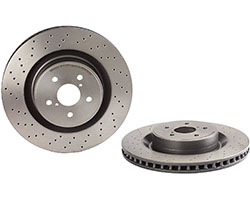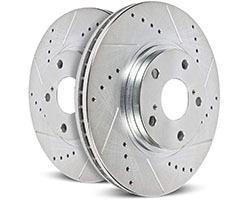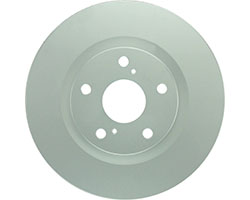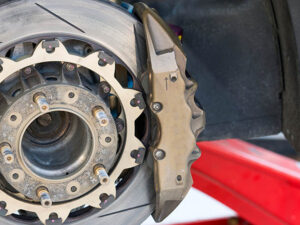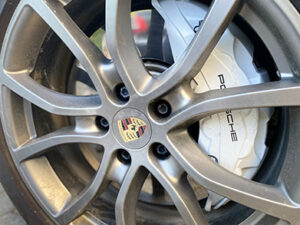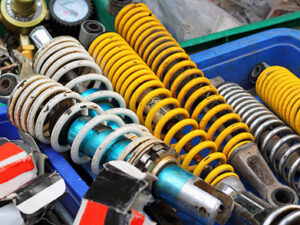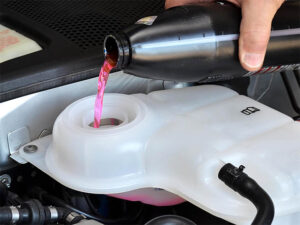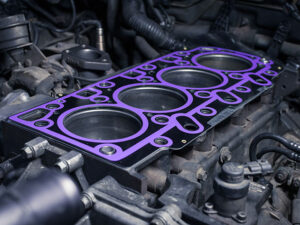Home \ Shop \ Engine & Efficiency \ Brake Rotors
The Best Brake Rotors in 2025: All You Need To Know
Brake rotors wearness has a strong impact on safety, their replacement often being a part of the maintenance of car with mileage more than 60000 miles
- 1. First Symptoms of Faulty or Worn Brake Rotors
- 2. Key Benefits of Fitting the Best Replacement Brake Rotors
- 3. Review Of The Best Brake Rotors
- 4. BREMBO Brake Rotor (09.A300.11)
- 5. POWER STOP Evolution Brake Rotors (JBR1127XPR)
- 6. BOSCH QuietCast Brake Rotor (50011560)
- 7. ACDELCO Gold Brake Rotor (18A1705)
- 8. POWER STOP Z23 Brake Rotors & Pads Kit (K3053)
- 9. R1 CONCEPTS Front Brake Rotors Kit (FEC.44171.02)
- 10. Shopping for the Best Brake Rotors
- 11. Brake Rotor Materials and Coatings
- 12. Are drilled brake rotors better?
- 13. Can you drill your own rotors?
- 14. Do black brake rotors stay black?
- 15. How do you break-in coated rotors?
- 16. Are there rotors that don't rust?
While there is a lot of talk surrounding the best brake pads, the mating components – the brake rotors – seem to be totally ignored. Although brake pads generally require replacement more often, brake rotors are also subjected to wear and tear and thus will also at some point in time need replacement.
The question is, however: What are the symptoms of worn or faulty brake rotors and what benefits can the consumer expect from fitting the best replacement disc-brake rotors?
First Symptoms of Faulty or Worn Brake Rotors
Although brake rotor problems are often difficult to pinpoint because of the interaction between brake pad and rotor, there are some symptoms that are dead giveaways:
- Pulsation of the brake pedal: on application of the brakes, the pedal pulsates or in some cases, vibrates. This is caused by warped or unevenly worn rotors that set up a pulsation in the brake pads that in turn force the brake pedal to vibrate.
- Steering wheel shimmy: this condition, usually triggered by warped or distorted brake rotors, causes the steering wheel to shake or vibrate when the brakes are applied at higher speeds. In severe cases, the vibration can cause the whole vehicle to shake.
- Stress-cracks or -crazing: stress cracks appear as small “flake-like” fissures on the surface of the rotors and are a consequence of extreme heat buildup commonly caused by excessive wear.
- Noisy brakes: this is often as a result of overly worn or grooved rotors that allow the brake pad’s backing-plate to come into contact with the ridge on the outside circumference of the rotor. It is advisable, at the first signs of a prominent ridge developing, to measure the disc’s thickness with a micrometer and compare to the manufacturer’s wear limits.
Once it has been established that the brake rotors are faulty or reaching the service limit they need to be replaced – usually as an axle set.
Key Benefits of Fitting the Best Replacement Brake Rotors
With a wide range of aftermarket brake rotors to choose from, it is important the consumer only fits the best parts for the application. Besides the obvious safety implications, there are many noteworthy benefits to fitting the best disc-brake rotors, including:
- Increased serviceable lifespan – poor quality brake rotors are likely to have an increased wear-rate, and worn brake rotors are dangerous. Parts that exceed the manufacturer’s specified wear limit will run hotter, develop surface cracks and negatively impact braking performance.
- Smoother braking – unevenly worn rotors, or parts that have excessive run-out, will generate brake shudder or steering-wheel shimmy, both of which are extremely irritating. While all rotors wear, the best brake rotors will maintain their dimensional integrity far longer.
- Improved wet weather performance – fitting cross-drilled or slotted brake rotors will help clear water buildup on the braking-surface, thereby reducing brake-lag in the wet, which will improve stopping distances.
As is the case with brake pads, brake rotors have also evolved over the years – to the point where the consumer can almost customize the features they desire, by selecting the appropriate type and material of the brake rotor.
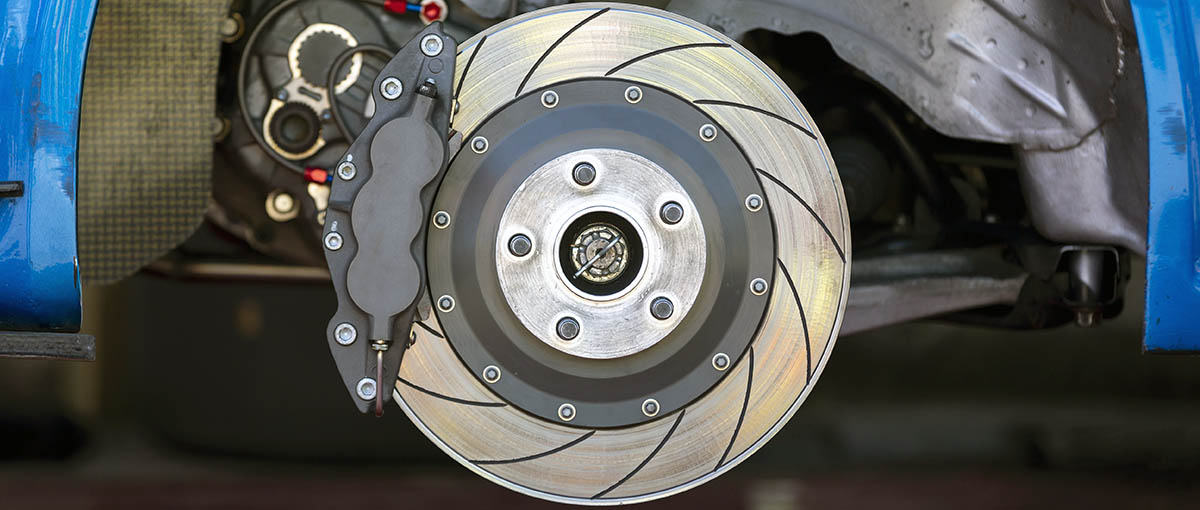
Review Of The Best Brake Rotors
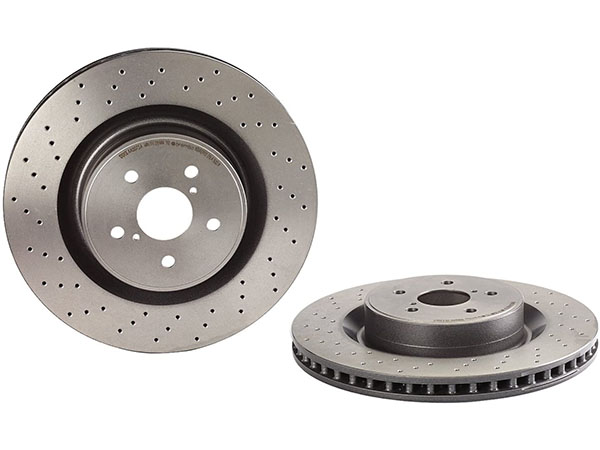
PROS
- Great performance and longevity
- Drilled design improves exterior of the car
- Improves heat dissipation from brakes
- UV-coating save the disc as new for a long
- Easy visual control of minimum thickness
CONS
- Price for one disc, so if you need 2 rotors - you need to pay twice
MAIN CHARACTERISTICS
BRAND
BREMBOROTOR TYPE
DrilledMATERIAL
Cast-ironROTOR EXTERIOR
CoatedPOSITION
FrontMODEL
09.A300.11INCLUDES
1 rotor
What comes to your mind whenever you think of quality disc brake rotors? Utility? Durability? Quiet operation? Maximum operation? If these considerations are important to you, then this disc brake rotor is a good pick for you. It possesses solvent free UV coatings that are friendly environmentally and offer maximum protection to the discs. The Brembo 09.A300.11 UV brake rotor also offers protection to surfaces of braking plates. It comes with a sort of technology (pillar venting technology) that positively influences the cooling ability of brakes and increases the strength of discs by above 40%. This particular front disc brake rotor comes in a high carbon cast that has the ability to minimize vibration and noise. It also ensures performance at its peak and super driving comfort. This front disc brake rotor meets up with OEM specifications and even exceeds them. Another thing car owners look out for in going for disc brake rotors is how easy it is to install them. This disc brake rotor is pretty easy to install and works effectively. It is a really good choice for you.
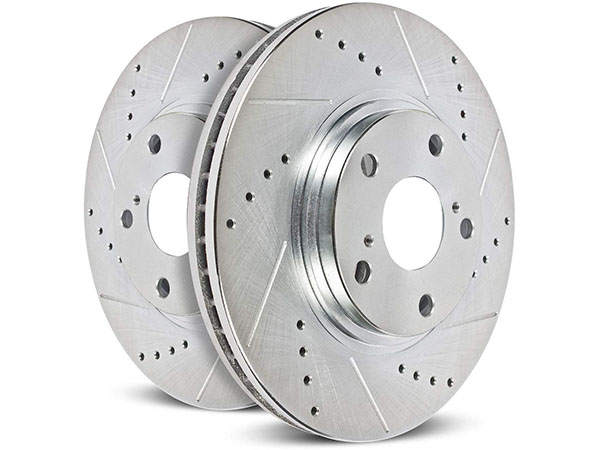
PROS
- Great for active driving and track days
- 2 high-performance rotors for the price of 1
- Cross-drilled and slotted iron construction
- Complements car's exterior, looks great
- Prevents the appearance of vibrations
CONS
- No significant downsides
MAIN CHARACTERISTICS
BRAND
Power StopROTOR TYPE
Cross-drilled & SlottedMATERIAL
Cast-ironROTOR EXTERIOR
CoatedPOSITION
FrontMODEL
JBR1127XPRINCLUDES
Rotors pair
To get excellent braking performance, this product comes in handy. This kind of rotors are referred to as Power Stop drilled and slotted rotors, and they give your vehicle a two-in-one functionality. Slots in these rotors keep dust and gas away, and at the same time, the rotors provide the benefits of drilled holes in keeping the temperature as low as possible. This kind of rotors boasts of coming in the best of blanks and come in the best versions of grade castings from the most excellent foundries. This product comes in a zinc material which keeps it from rusting. This particular rotor design can be said to be the most popular in terms of performance for day track and street applications. It also possesses slots that help to ensure that there is a contact patch that is clear between the rotor and the pad. Another interesting thing about these rotors is that they easily fit and function adequately.
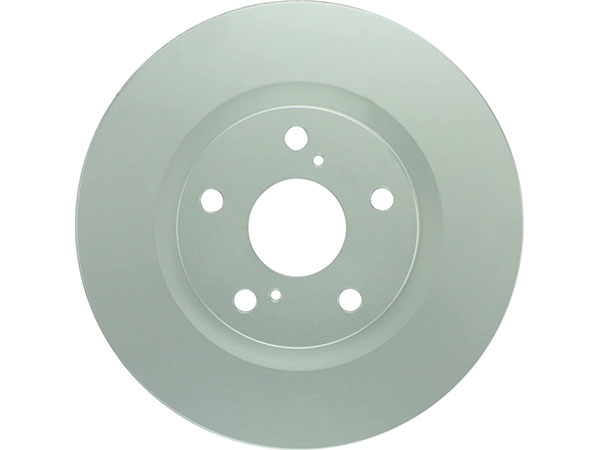
PROS
- It's a good rotors for most of cars
- Built to last solid cast-iron design
- Great value for money
- Trusted and well-known manufacturer
- Proper operation with ABS and Traction Control systems
CONS
- No significant downsides
MAIN CHARACTERISTICS
BRAND
BOSCHROTOR TYPE
SolidMATERIAL
Cast-iron G3000ROTOR EXTERIOR
Zinc-coatedPOSITION
FrontMODEL
50011560INCLUDES
1 rotor
The QuietCast trademark has been on the scenes for many years and is notable for delivering products of the best quality. The BOSCH brand has over 70 years of expertise in OE braking and that is pretty emphatic. You can be sure that its products are topnotch. This product is an interesting brake rotor and, it gives precision and balance which ensures itch-free operation without the pulsation of your pedal. This particular brake rotor also comes in materials that ensure its longevity and durability. It comes in aluminum and zinc materials which ensure its durability and give a clean look for the kind of open wheels that apply these days. These materials ensure the best quality performance and help to prevent corrosion and rust. This rotor comes in a vane configuration that meets up with OEM standards. This helps in the effective dissipation of heat, reduction in vibration, and guarantee significant longevity. Another very interesting thing about this brake rotor is that it has total coverage for North-American, European and Asian vehicles.
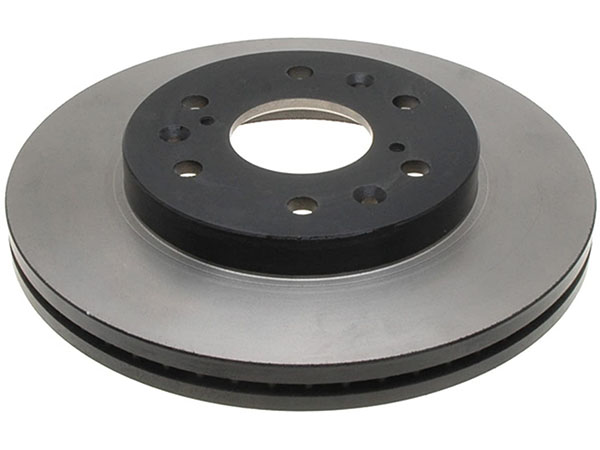
PROS
- These brake rotors are built to last
- Ensures smooth brake operation
- Has the ability to reduce noise on braking
- Durable material help to avoid vibrations
- Keeps brake pads in good condition
CONS
- The not-coated part is visible behind the alloy wheels
- Each rotor often has a significantly higher weight than analogs (on 9 - 10 pounds)
MAIN CHARACTERISTICS
BRAND
ACDelcoROTOR TYPE
SolidMATERIAL
Cast-ironROTOR EXTERIOR
Non-coatedPOSITION
FrontMODEL
18A1705INCLUDES
1 rotor
ACDelco can be said to be the true brand for General Motors OE parts. If your expectations for a brake rotor have to do with fit, form and function then this brake rotor is for you. The ACDelco Gold 18A1705 is known for ensuring excellent brake operation and reduction in noise. It has also gone through the Noise/ Vibration/ Harshness (NVH) test and has come out excellently. It also comes in a design that ensures that heat is dissipated effectively. This helps to ensure the longevity of the rotor and also a reduction in vibration and noise. It is a very excellent choice for general-purpose cars and most vehicle models. This rotor is also a very excellent alternative to OE (Original Equipment) parts. It is made in such a way that it meets up with OE expectations and delivers optimum value and quality. With the ACDelco Gold 18A1705 Brake Rotor, you are sure to enjoy, durability, functionality, effectiveness and affordability at their very best.
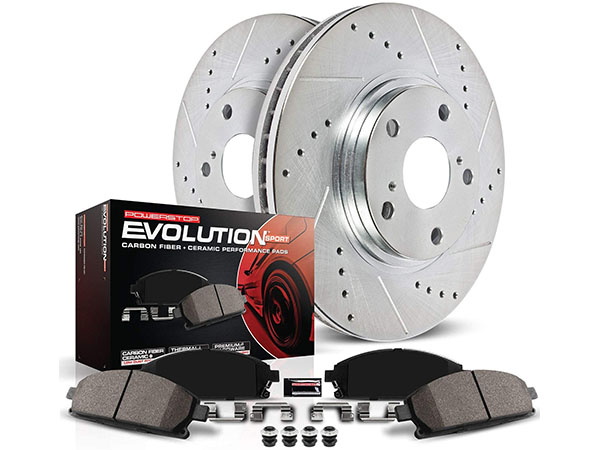
PROS
- Full kit for brakes upgrade
- High-performance components included
- Improves the look of the car
- This brake kit designed to work quiet and effective
- Great kit for track days and active driving lovers
CONS
- No significant downsides
MAIN CHARACTERISTICS
BRAND
Power StopROTOR TYPE
Drilled & SlottedMATERIAL
Cast-ironROTOR EXTERIOR
Zinc platedPOSITION
FrontMODEL
K3053INCLUDES
2 rotors, 2 pad sets, hardware
This K3053 brake kit makes it pretty easy to improve your vehicle’s braking power. It is made in such a way that it accumulates little dust and reduces noise to the barest minimum. It also comes with a two-in-one functionality. It provides the benefit of slots, keeping off dust and gas, and at the same time offers the benefit of drilled holes in cooling. It comes with everything you think you need to complete an excellent brake job; talk about hardware that is upgraded, lubricant with excellent performance, and carbon-fiber ceramic brake pads among other special features. The ceramic brake pads which attract low dust are supported with carbon fibers for the fortification of the compound. They are free of noise, free of dust and ensure an improvement in braking power without affecting daily drivability. The rotors are cast from the best of materials which means that they do not require any upgrade, whatsoever. The cooling effect of the drilled holes ensures that the temperature of the brake is kept down during intense operation. These rotors, apart from looking amazing behind the wheels of your vehicle, ensure that rust and corrosion are prevented.
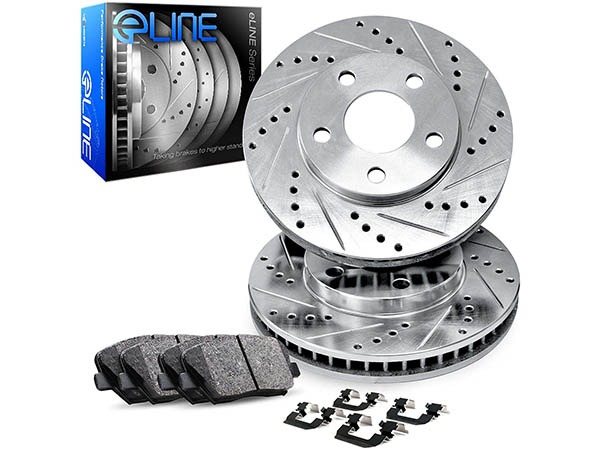
PROS
- Cast-iron brake rotors and ceramic brake pads combined into a set for a full and easy front brakes replacement or upgrade
- This set gives a higher margin of safety when a car obtain intensive and regular braking, comparing with non-cross-drilled and slotted equivalents
- Quiet and easy operating on braking
CONS
- No significant downsides
MAIN CHARACTERISTICS
BRAND
R1 ConceptsROTOR TYPE
Drilled & SlottedMATERIAL
Cast-ironROTOR EXTERIOR
Zinc platedPOSITION
FrontMODEL
FEC.44171.02INCLUDES
2 rotors, 4 brake pads, hardware
This R1 Concepts Front Brake Rotors Kit is another interesting option and it comes with holes drilled with the precision that help with effective heat dissipation. The eLine series brake rotors give excellent braking power to your vehicle and ensure its functionality at the very best level. These brake rotors are made to fit in perfectly; they require no modifications whatsoever. Furthermore, this product comes with diamond slot technology which helps to remove debris gathered and to prevent the pad from the glazing. It also helps to ensure an extension of the life of the pad and rotor.
The ends of the rotor that are tipped with diamond serve as an indicator for the replacement of the rotor. When the tips wear out, it is a pointer to the fact that it is time for a replacement. This brake rotor is also coated with zinc to prevent rust and corrosion. You can be sure that it is coated in a way that ensures its durability and longevity. It is possible that some parts of the corrosion protection wear off due to continuous use; however, you are assured that the other parts of the rotor remain protected.
Shopping for the Best Brake Rotors
When shopping for the best brake rotors, it is advisable to begin by comparing the features of the various rotor types.
When designing the brake system, engineers select an architecture that not only matches the vehicle’s performance but also meets costing targets, thus there are five types of the brake rotor, each with its particular features:
1. Solid brake rotors.
In the early days, all “disc-brakes” were solid, but in modern vehicles, these are almost entirely confined to rear brake applications and cost-sensitive small cars. Because of their simplicity, these are the cheapest of all the brake rotors.
2. Vented brake rotors.
As vehicles became heavier and more powerful the front brakes, which account for up to about 70% of a vehicle’s stopping power, were in danger of overheating: a problem that was solved with radial-ventilation of the core of the rotor.
This type of rotor has been fitted as standard equipment to the front wheels of most passenger vehicles for a number of years and offers good all-round performance, cost, and durability.
3. Cross-drilled brake rotors.
The holes drilled across the rotor surface on these parts offer the following benefits:
- An increase in the coefficient of friction, created by the perforated surface, significantly improves the initial braking response.
- In wet-weather the holes assist in clearing water that would normally be trapped between the brake pads and rotor on initial application of the brakes, thereby significantly reducing stopping distances.
- The holes also assist in dispersing heat and gas produced by the combustion of the resins in the brake pads under heavy braking, thereby increasing braking efficiency and improving “pedal-feel”.
- During normal braking the iron particles shed as the metal surface wears are embedded in the brake pad’s friction material, reducing efficiency and increasing the wear on the rotor. On cross-drilled rotors, the edges around the holes continuously clean the pad’s surface.
While this design is currently the only factory fitted to a handful of performance and luxury vehicles, aftermarket cross-drilled brake rotors are a useful improvement over standard ventilated items as an all-weather rotor upgrade.
4. Slotted brake rotors.
The radially aligned slots in the rotor-surface hold all the benefits of cross-drilling, as described above, but these rotors are also more resistant to cracking under extremely harsh braking – such as experienced in circuit racing.
As with drilled-rotors, slotted brake rotors are the only factory fitted to a small number of performance and luxury vehicles but are a worthwhile after-market upgrade if the vehicle is to be used for any track work.
Some off-road enthusiasts also argue that slotted brake rotors are better suited to off-roading because they are not prone to clogging with mud, dirt, and debris.
5. Drilled and slotted brake rotors.
This type of rotor offers all the benefits of the drilled or slotted discs described above. The design is a little more stable than cross-drilled parts at moderate temperatures but is not recommended for the extremes of track work.
These brake rotors have only recently begun appearing as factory fitment on some of the heavier, high-performance sedans and SUVs, and would ideally suit aftermarket applications where slightly higher temperatures are expected – such as in tow-vehicles.
While most brake rotors are constructed from cast-iron there are certain applications where this is not the best material choice.
Brake Rotor Materials and Coatings
While cast-iron is a very good brake rotor material it does have a significant drawback – its weight, especially as it contributes to the unsprung mass that affects the vehicle’s handling.
Thus some manufacturers opt for other materials, such as steel, because it is lighter and dissipates heat better. And when the cost is of little consequence, such as in Hypercars, manufacturers are beginning to opt for exotic, race-bred materials such as carbon, ceramic, and carbon-ceramic rotors that offer excellent heat dissipation, weight-saving and stopping performance.
Another downside of cast iron is the fact that it corrodes very easily, and with OEMs adopting larger alloy wheels with more open designs, the brake rotors and calipers play an increasingly important part in the aesthetics of the vehicle; and a brand new car on display in the showroom with corroded rotors is no longer acceptable, as the parts are now clearly visible.
To solve this, manufacturers have chosen to coat – as opposed to only painting portions of the rotor – the entire part with a water-based, chromium-free and environmentally friendly compound, usually containing zinc and aluminum flakes.
This coating has very little to do with directly improving brake-performance, as it is removed from the friction surface with the first application of the brakes – what it does do, however, is protect the rotors from corrosion during shipping as well as keeping non-working surfaces, such as the vanes on ventilated discs, rust-free.
See also: Quality Brake Fluids for Cars, Best All-Season Tires, and Portable Air Compressors For Tire Inflation
So what features should the consumer prioritize when shopping for the best replacement brake rotors?
Well, that depends on the type of vehicle and the driving application:
- If the vehicle is a standard saloon car that spends most of its life on the highway, then it would be advisable to stay with the type of brake rotor the vehicle left the factory with.
- If the car is regularly used on mountain roads, or frequently driven in wet weather, cross-drilled or slotted rotors would be a good choice.
- The Off-road enthusiast, on the other hand, could consider slotted rotors for the best results.
- Any vehicle expecting to spend time on a race track would also be best served with a set of slotted rotors.
- Drilled and slotted parts have the edge over other rotor types when fitted to tow-vehicles.
Having decided on the most important features that the best brake rotors should deliver, the final step is to make sure the product lives up to expectations: This is best accomplished by ensuring the parts come from a reputable brand.
Are drilled brake rotors better?
Cross-drilled brake rotors are a definite improvement over the standard ventilated disc brakes when it comes to all-weather performance, particularly in wet conditions.
Can you drill your own rotors?
Definitely not. Besides requiring special equipment, tampering with safety-critical equipment can have fatal consequences.
Do black brake rotors stay black?
Black-painted non-working surfaces on the rotor will retain the finish, however the oxidized rotor and brake dust will discolor the surface, as will excessive heat generated through hard braking.
How do you break-in coated rotors?
The coating applied to the friction surface of the rotor is temporary, and as such is removed on the first application of the brakes. This means the break-in process is the same as for uncoated parts.
While the procedure to bed-in the rotors may vary depending on the rotor manufacturer it is common practice to carry out five gradual stops from about 35 miles per hour, followed by four or five more aggressive stops from 45 miles per hour. By following this procedure any dirt or debris will be removed from the rotors and pads, while keeping the temperature low through light braking will normalize the rotor and remove any high-spots.
Are there rotors that don't rust?
Yes, in rare instances brake rotor manufacturers forgo the use of cast iron for the sake of achieving specific performance objectives that the traditional metal simply cannot support.
A prime example of this are the carbon-ceramic rotors fitted to many exotic sports cars. Another example are the discs manufactured from ‘discalloy’ which is typically protected by a “thermic black” coating that wards off corrosion for the life of the part.
With such a wide range of rotors to choose from, consumers have a great opportunity to customize their vehicle when replacing the discs – whether it be aesthetically or functionally. By carefully selecting the best brake rotors for their particular application car owners can improve both the braking performance and appearance of their vehicles.
We do an efforts to find, research and recommend the best products. So, we may receive commissions from purchases that you make after following the links in our product reviews.


